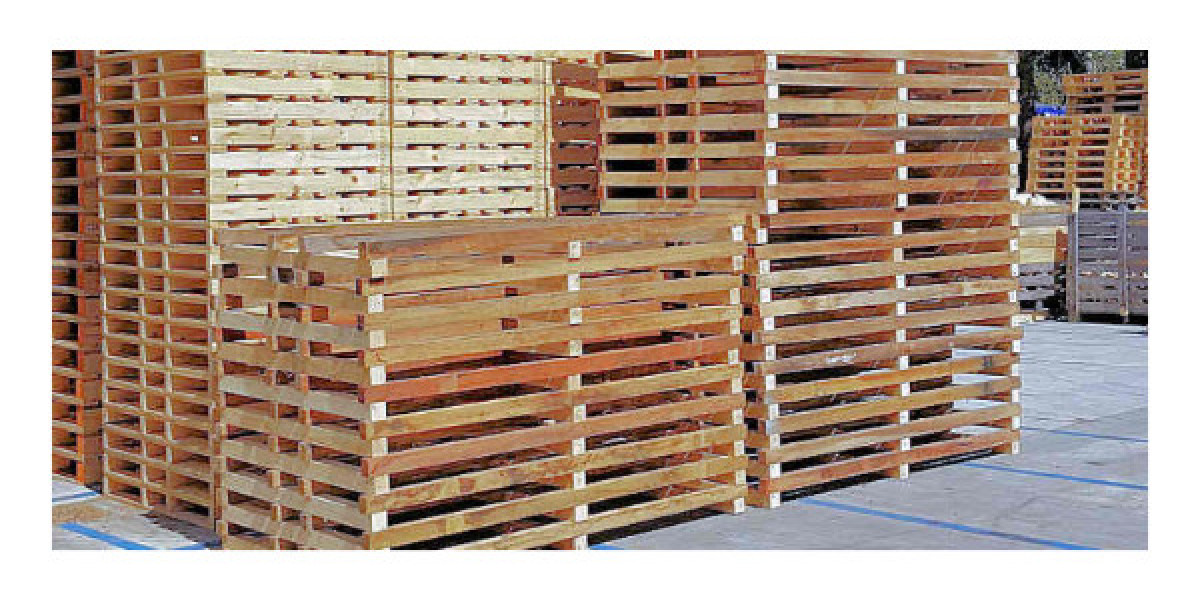Wood pallets have supported the movement of goods for nearly a century, and despite rapid innovation in logistics materials, they remain the most widely used load-handling platform in the world. From warehouses and factories to retail distribution and international export, wooden pallets continue to provide unmatched value due to their strength, availability, adaptability, and affordability.
What Are Wood Pallets?
A wood pallet is a flat, sturdy, and portable platform made from softwood, hardwood, or engineered timber, designed to support goods while being lifted by forklifts, pallet jacks, hand lifts, or automated systems. They are commonly built from pine, spruce, oak, acacia, eucalyptus, or mixed recycled timber depending on region and purpose.
The structure generally consists of top deck boards, stringers or runners, and bottom deck boards, although variants like wooden skids omit the lower deck for specialized needs. Standard wood pallets are engineered to handle substantial weight loads, making them suitable for products ranging from boxed retail goods to industrial equipment.
Why Wood Pallets Continue to Dominate the Industry
1. Cost-Effective and Economical
Wood pallets are significantly cheaper to manufacture than plastic, metal, or composite alternatives. Since wood is a natural and globally available raw material, production costs remain low, especially when pallets are made from recycled or reclaimed timber. For businesses operating on tight budgets or shipping in high volumes where pallet return isn’t necessary, wooden pallets deliver the most economical choice.
2. High Strength-to-Weight Ratio
Wood offers excellent compression resistance and can support heavy static loads without bending. Hardwood pallets are particularly strong under high pressure, while softwood pallets provide balanced performance at lower weight. This makes wooden pallets ideal for dense freight, floor stacking, long-term storage, and forklift transport.
3. Highly Customizable
One of wood’s most valuable traits is its versatility. Wooden pallets can be manufactured or modified to precise specifications including:
Custom sizes for oversized loads
Double-wing or four-way entry designs
Reinforced stringers for machinery transport
Kiln-dried or heat-treated versions for export compliance
This adaptability has made wood pallets standard across industries with specialized needs.
4. Easy to Repair
Unlike plastic or metal pallets, wooden pallets can be repaired quickly and affordably by replacing individual boards or runners. This extends lifespan, reduces waste, and lowers long-term investment in closed-loop systems. Because repair materials are accessible and inexpensive, businesses tend to experience a lower total cost of ownership.
5. Sustainable and Renewable
Wood is a natural, renewable material, and when sourced responsibly or constructed from recycled timber, wooden pallets are one of the most sustainable industrial platforms available. At the end of their lifecycle they are:
✔ biodegradable
✔ reusable as wood chips, mulch, or energy fuel
✔ or recyclable into new shipping lumber
Their ability to re-enter new resource streams contributes to a lower environmental footprint than other single-life materials.
Industries Relying Heavily on Wood Pallets
Wooden pallets are used across countless sectors including:
Logistics & freight forwarding
Retail and wholesale distribution
Manufacturing plants
Agriculture & pesticide-free export products
Construction & building materials
Automotive parts coordination
Textiles and consumer goods
Their universal compatibility with lifting equipment makes them standard in nearly all supply chain stages.
ISPM 15 Compliance for Export
While untreated raw wood can introduce pests into ecosystems, wooden pallets are eligible for international certification through ISPM 15 heat treatment or fumigation, which ensures they are safe for cross-border transport. Once treated, pallets are stamped with the IPPC mark, reducing the risk of customs rejection. This makes wood pallets viable for export when phytosanitary regulations must be met.
Types of Wood Pallets
Common wooden pallet designs include:
Block Pallets
Built with blocks between deck boards instead of stringers, allowing fork entry from all four sides. These are popular in European export systems.
Stringer Pallets
The most common design globally, built using long wooden beams called stringers. They can be two-way or four-way entry depending on notched stringer design.
Double-Face / Reversible Pallets
Have deck boards on top and bottom, allowing use on either side for long-term floor stacking.
Single-Use / One-Way Pallets
Low-cost pallets made for non-return shipping, often from recycled mixed timber.
Heavy-Duty Hardwood Pallets
Used for machinery, granite, chemicals, or metal products requiring maximum static load capacity.
Benefits That Matter Most in Daily Operations
Forklift Compatibility
Wood pallets are designed to withstand repeated forklift movement when constructed properly.
No Static Charge
Wood is naturally non-conductive, meaning pallets pose zero electrostatic discharge risk, making them suitable for electronics when properly treated.
Structural Friction
Unlike smooth plastic, wood surfaces provide natural friction that helps prevent load slipping during movement.
Load Testing Capability
Custom wood designs can be engineered to meet specific dynamic, static, and racking load tests as needed.
Challenges of Wood Pallets
No logistics product is without limitations. Wood pallets can be impacted by:
Moisture absorption when stored improperly
Mold growth in humid conditions
Heavy weight if using dense hardwood
Need for treatment when exporting
However, these challenges are widely manageable through heat treatment, kiln drying, sealed storage, rotation systems, and good handling practices.
The Bottom Line
Wood pallets continue to thrive because they are affordable, strong, adaptable, repair-friendly, and globally standardized. They provide businesses with the stability they need at a cost they can sustain, without sacrificing environmental responsibility when using recycled or certified timber options.
Whether shipping locally or across continents, wooden pallets offer a dependable and scalable material-handling foundation that industries can build their logistics efficiency around.








